
This edition published in 2012 by Arcturus Publishing Limited
26/27 Bickels Yard, 151153 Bermondsey Street,
London SE1 3HA
Copyright 2012 Arcturus Publishing Limited
All rights reserved. No part of this publication may be reproduced, stored in a retrieval system, or transmitted, in any form or by any means, electronic, mechanical, photocopying, recording or otherwise, without prior written permission in accordance with the provisions of the Copyright Act 1956 (as amended). Any person or persons who do any unauthorised act in relation to this publication may be liable to criminal prosecution and civil claims for damages.
eISBN: 978-1-78212-666-9
AD002398EN
Contents
INTRODUCTION
M ovies, tattoos, fairy tales, manga, religious icons, political thrillers, role-playing games, fantasy artwork and TV shows... images of dragons are everywhere and have been for so long that you could be forgiven for believing they are not mythical, but real. Their longevity poses an interesting question: how does a creature that has never been proven to exist maintain such a hold on our collective imagination?
We will examine this, but first what does a typical dragon look like? Dragons are widely regarded as having the appearance of a massive winged reptile, an enormous flying lizard that exhales fire and smoke. Interestingly, different cultures have variations on this basic appearance; some dragons are more snake-like than lizard-like, for example. Most dragons are an amalgamation of two or more animals, and as such they are the best-known example of a chimera, a monstrous creature with parts from multiple animals. Other chimeric beings include griffins, sphinxes, unicorns and so on, which well discuss later in this book.
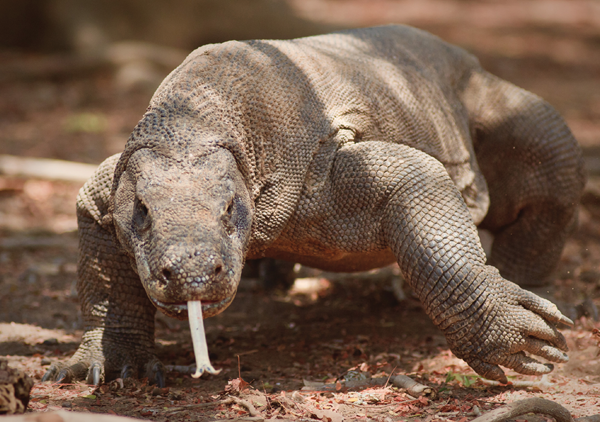
The Komodo dragon is probably the closest living relative to the dragon of myth.
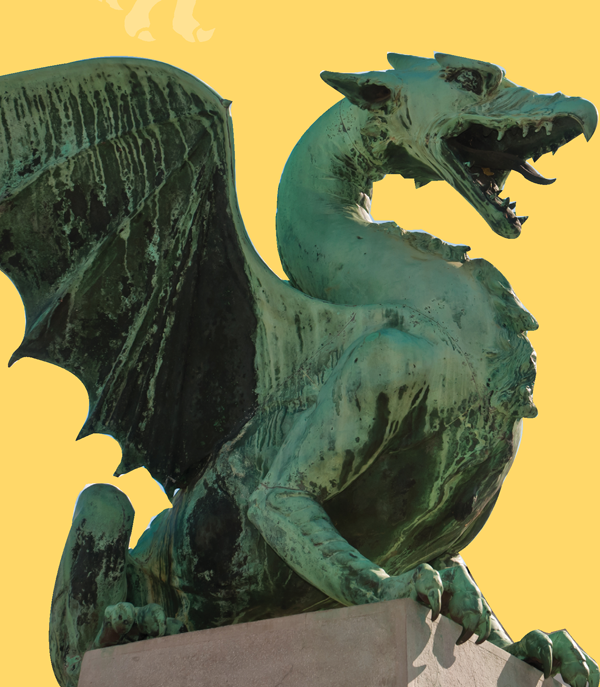
An intimidating statue typical of European dragons. Originating in France, carved stone gargoyles representing mythical dragon-like creatures were used on churches and sacred buildings as waterspouts to throw off the rain.
The origin of dragons
The dragons enduring appeal as an icon and symbol of supernatural power has been strengthened by the mystery surrounding it. Many people have a deep desire to connect with myth and the idea that such a remarkable creature might have walked the Earth feeds this need. So is there any evidence that dragons ever existed? They do bear a striking resemblance to the pterosaur, a flying reptile that has been extinct for the last 65 million years. A descendant of the pterosaur, the ropen, is said to live in Papua New Guinea, although sightings are rare. The ropen is a cryptid, which means its existence is alleged but not confirmed, unlike the Komodo dragon, the large monitor lizard found on certain Indonesian islands. Undisturbed by predators and unchanged in size for the last 900,000 years, the Komodo dragon is as close as we get to a living relative of the legendary dragon.
Centuries of storytelling have resulted in numerous adaptations of these creatures and their elevation to magical status. Dragons are present in many creation myths from different cultures, so they certainly play a significant role in the human subconscious.
If we accept that dragons are indeed the result of the human imagination we need to look at the qualities we seek to invest in them. These are usually present in the animals that make up the dragon chimera (in China dragons are composed of nine animals, while in Europe they are hybrids of several animals, but not necessarily nine).
Dragon creation myths
The dragon appears in creation myths the world over, from Babylons Tiamat to Indias Nga serpent deities, and including the Bunyip of Australian Aborigines, North Americas Piasa, the Aztec god Quetzalcoatl and West Africas Aido Hwedo, also known as the Rainbow Serpent, who embodied both genders in one supernatural body.
In Babylon, the cradle of civilization, a goddess called Tiamat (tellingly, a female creature who embodied primordial chaos) was in turn represented as a sea monster and a dragon. Tiamat was the inspiration for one of the villains in the game Dungeons and Dragons, where she is represented as a five-headed dragon. She was closely linked to another monstrous sea creature, Lotan, a giant seven-headed serpent, probably an early incarnation of the Hydra. Lotan is believed to have evolved into what we know as the Leviathan, which dates from the time when the Israelites came into contact with these earlier myths and assimilated them into their own.
The Leviathan, present in the Old Testament Book of Job, is a monstrous sea creature whose power and strength highlight mans weaknesses. Today, the word Leviathan is used to describe any enormous sea creature or structure, but in Biblical times it was a metaphor for the Egyptians, powerful enemies of the Israelites, who the latter saw as an invincible opponent. Centuries later, in the Middle Ages, the Leviathan became associated with Satan and was regarded as the incarnation of demonic qualities.
Greek mythology is full of serpents and dragons, especially the multi-headed variety. Several of these, including the Hydra, Scylla, Chimra and Medeas chariot dragons, were present in Theoi mythology. The noun dragon, from the ancient Greek drakn (), means large reptile.
In China, where emperors were believed to be descended from dragons, the creature was used as a symbol of power and its divine status was especially celebrated. However, long before the dragon was taken to represent imperial power, N-Kua, a goddess who was half-woman and half-dragon, had created men and women out of clay and breathed life into them.
Dragon qualities
There are some striking differences in the characteristics of Eastern and Western dragons. Eastern dragons are generally positive, benevolent figures which represent aspirational qualities. In the case of Western dragons, medieval myths and earlier tales identified them with evil and Satan and they became a prized rival and trophy for knights in search of glory. In Ancient Egypt, the sun god Ra was said to fight his archenemy, the infernal dragon Apophis, god of chaos and darkness, every day as the sun gave way to night. Again this tale gave rise to the conviction that dragons were diabolical beings.
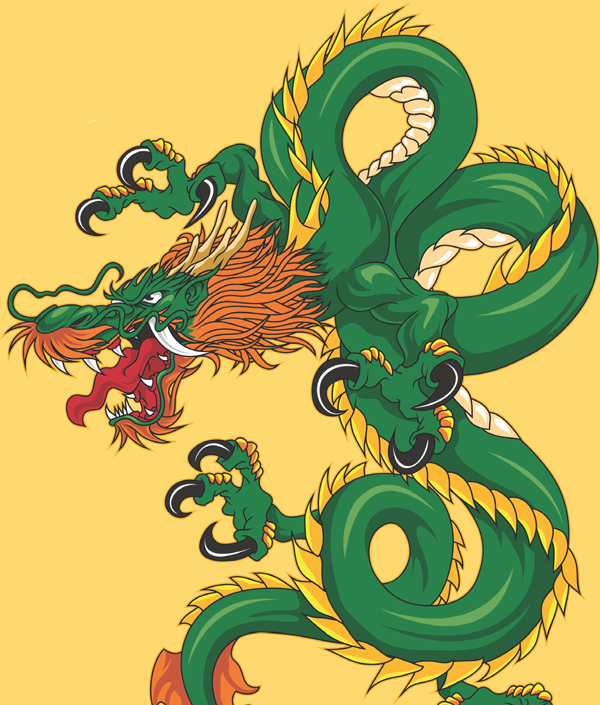
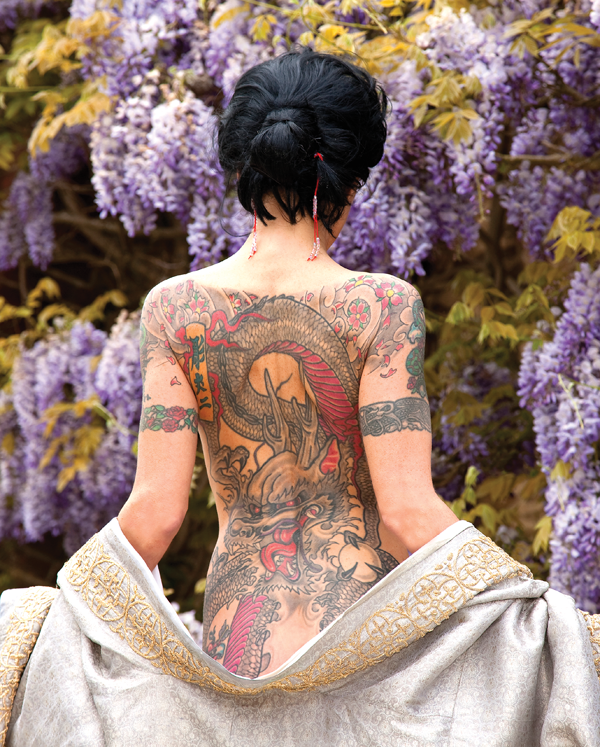
An elaborate back piece depicting a dragon clutching a sacred pearl
EASTERN DRAGONS
There are dozens of different types and representations of Eastern dragons in existence, all of them linked to local folklore. Here we explore the most popular examples, which have been successfully transferred to skin art. The fact that these images have been widely reproduced on paper over the centuries almost certainly contributes to their easy adaptation as tattoos.





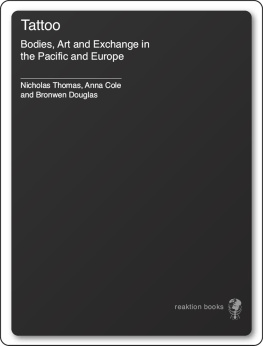
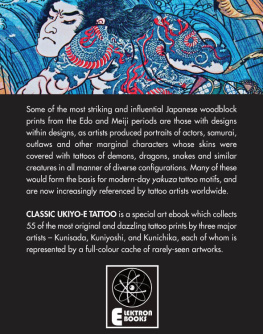
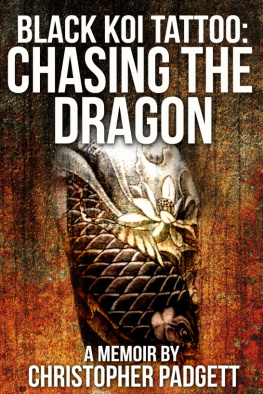
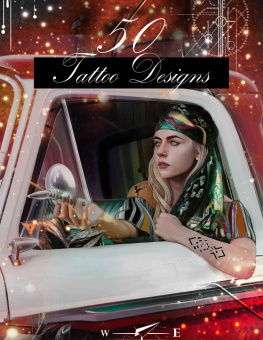
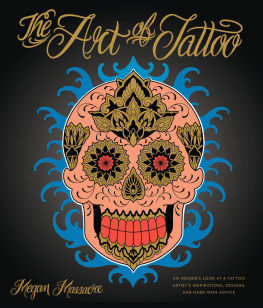
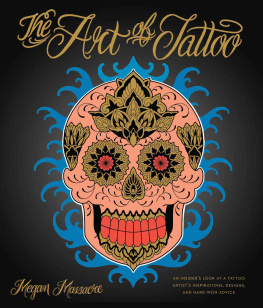
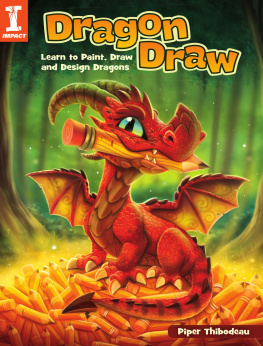
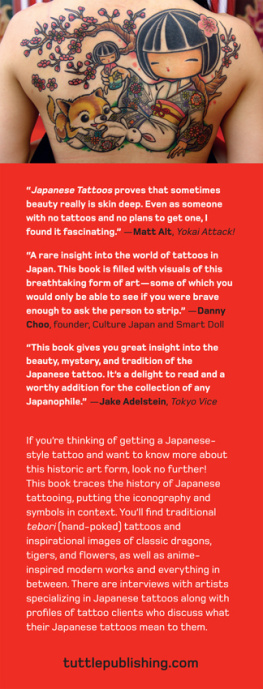



 The Komodo dragon is probably the closest living relative to the dragon of myth.
The Komodo dragon is probably the closest living relative to the dragon of myth. An intimidating statue typical of European dragons. Originating in France, carved stone gargoyles representing mythical dragon-like creatures were used on churches and sacred buildings as waterspouts to throw off the rain.
An intimidating statue typical of European dragons. Originating in France, carved stone gargoyles representing mythical dragon-like creatures were used on churches and sacred buildings as waterspouts to throw off the rain. 
 An elaborate back piece depicting a dragon clutching a sacred pearl
An elaborate back piece depicting a dragon clutching a sacred pearl